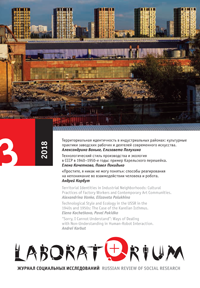Технологический стиль производства и экология в СССР в 1940–1950-е годы:
пример Карельского перешейка
Technological Style and Ecology in the USSR in the 1940s and 1950s: The Case of the
Karelian Isthmus
Author(s): Pavel Pokidko, Elena KochetkovaSubject(s): Business Economy / Management, Economic history, Evaluation research, Human Ecology, WW II and following years (1940 - 1949), Post-War period (1950 - 1989), History of Communism
Published by: Центр независимых социологических исследований (ЦНСИ)
Keywords: Technological Style; Ecology; Industry; Industrial City; USSR; Karelian Isthmus; Pulp and Paper Industry;
Summary/Abstract: This article examines the technological style and interplay between technological development and ecology in the USSR in the first post–World War II decade. The study covers practices of work at the enterprises that produced significant industrial pollution in the Soviet Union. In so doing, the article is focused on the history of several pulp- and paper-making enterprises on the Karelian Isthmus, a territory that was annexed by the Soviet Union from Finland as a result of two Finnish-Soviet wars in 1944. The article argues that, while postwar conditions were defined by shortages of goods and finances, a lack of workers and specialists, and low motivation, the main task, as seen by the state, ministry, and enterprise, was to launch production processes and the manufacturing of paper and pulp as required by the plan. In general, the technological style of Soviet production after the war echoed the style of Joseph Stalin’s forced industrialization of the 1930s. It implied the dominance of the Five-Year Plan and mandated using all available resources to fulfil it in the shortest period of time. In the process it led to the overexploitation of equipment and substantial ecological risks.
Journal: Laboratorium. Журнал социальных исследований
- Issue Year: 10/2018
- Issue No: 3
- Page Range: 35-56
- Page Count: 22
- Language: Russian

